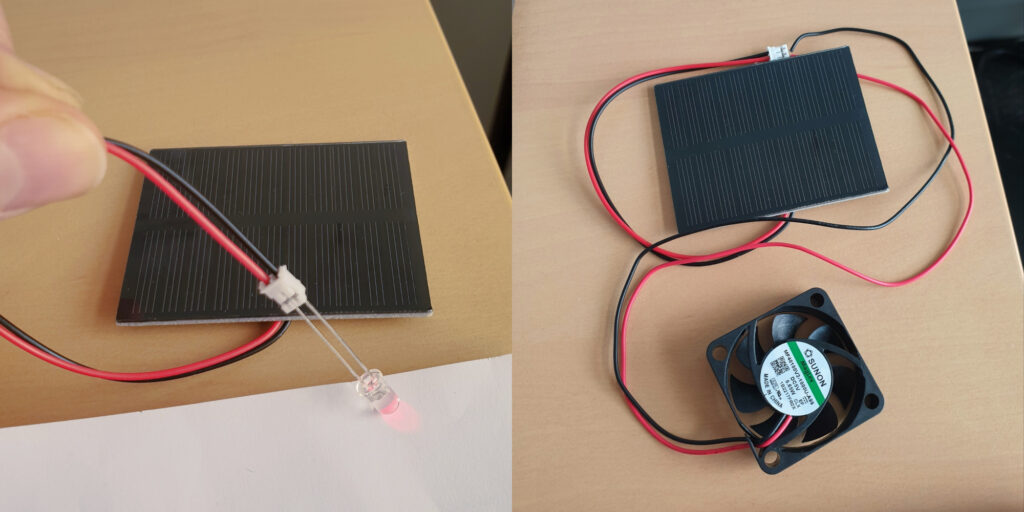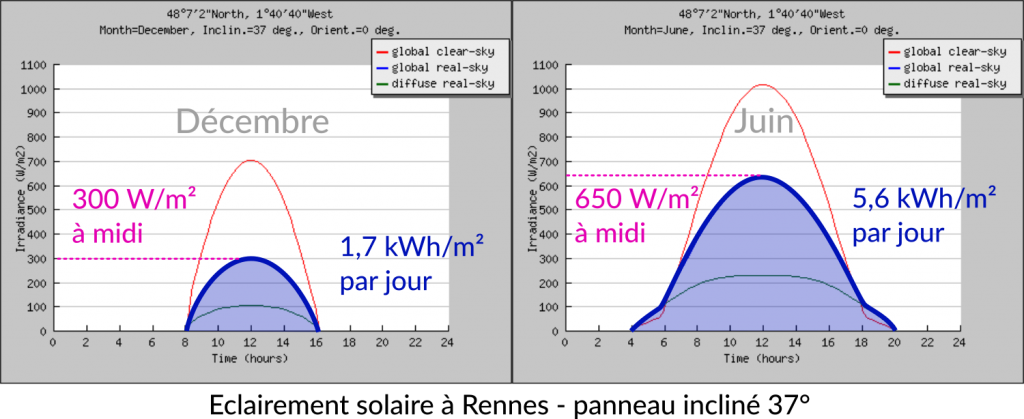[In French] I've uploaded the documents I used last month for a one-hour lecture at a primary schools (7-8 year old children), with a theoretical part on electrical energy conversion and a pratical part with small PV panels.

Pierre Haessig – personal website
[In French] I've uploaded the documents I used last month for a one-hour lecture at a primary schools (7-8 year old children), with a theoretical part on electrical energy conversion and a pratical part with small PV panels.

(Post in French, since it’s about a presentation in French...)
Ma présentation « Optimisation des microréseaux » faite à l’École normale supérieure de Rennes pour les Rencontres Mécatroniques est disponible en ligne. À destination des étudiant.e.s en mécatronique, elle se voulait assez pédagogique pour expliquer les enjeux de dimensionnement et gestion d’énergie des systèmes énergétiques.
Beaucoup d’idée développées dans le cadre de la thèse d’Elsy El Sayegh (soutenue mars 2024) avec mon collègue Nabil Sadou et qu'on continue à explorer avec Jean NIKIEMA, nouveau doctorant de l’équipe AUT !
More than a year after the start of its development, I’m now pushing the “final” version of my tiny web app “Electric vs Thermal vehicle calculator, with uncertainty”. It allows comparing the ecological merit of electric versus thermal vehicles (greenhouse gas emissions only) on a lifecycle basis (manufacturing and usage stages).

Compared to alternatives (featuring nicer designs), this app enables changing the value all the inputs to watch their influence, thus the name “calculator”. Of course, a nice set of presets is provided. Also, it is perhaps the only comparator of this kind to handle the uncertainty of all these inputs: it uses input ranges (lower and upper bounds) instead of just nominal values. Therefore, one can check how robust is the conclusion that electric vehicles are better than thermal counterparts (spoiler: it is, unless using highly pessimistic, if not biased, inputs).
I started this app in spring 2019, after I came across the blog post “Electric car: 697,612 km to become green! True or false?” by Damien Ernst (Université de Liège). At that time, I was not familiar with the lifecycle analysis of electric vehicles (EVs) and the article seemed at first pretty convincing. I was surprised to discover the sometimes violent feedback Pr. Ernst received. Fortunately, I also found more constructive responses, e.g. from Auke Hoekstra (Zenmo, TU Eindhoven), which I soon realized to be a serial myth buster on the question of EV vs thermal vehicles(*).
I quickly realized that the key question for making this comparison is the choice of input data (greenhouse gas emissions for battery manufacturing, energy consumption of electric and thermal vehicles …). Indeed, with a given set of inputs, the computation of the “distance to CO₂ parity” is simple arithmetic. I created a calculator app which implements this computation. This enables playing with the value of each input to see its effect on the final question: “Are EVs better than thermal vehicles?”.
While discussing Ernst’s post with colleagues, I got feedback that perhaps the first big issue with his first claim “697,612 km to become green” is that conveys a false sense of extreme precision. Indeed, high uncertainty around some key inputs prevents giving so many significant digits. And indeed, it is because several, if not all, inputs are open to discussion (fuel consumption: real drive or standard tests, electricity mix for EV charging: 100% coal or French nuclear power…?) that there are all these clashing newspaper articles and Twitter discussions piling up!
When I started the app, I thought I would save the time to research for good sets of inputs, since it is a calculator where the user can change all the inputs to his/her choice. This was a short illusion because I soon realized that the app would be much better with a set of reasonable choices (presets), so that I needed to do the job anyway. This is in fact pretty time consuming, since there is a need for serious research for almost each input. Now, I don't consider this work finished (it cannot!), but I think I've spent a fair attention and found reliable sources (e.g. meta-analyses) to each input. My choices are documented at the end of the presentation page.
In this process, I've learned a lot, and the main meta knowledge I take away is that inputs need to be fresh. Indeed, like in the field of renewables, the main parameters of EV batteries are changing fast (increasing size, decreasing per kWh manufacturing emissions…) and so is the European power sector (e.g. the emissions per kWh for EV charging).
(*) Auke Hoekstra was perhaps irritated to endlessly repeat his arguments everywhere, so he collected his key methodological assumptions in a journal paper “The Underestimated Potential of Battery Electric Vehicles to Reduce Emissions”, Joule, 2019, DOI: 10.1016/j.joule.2019.06.002 (with an August 2020 update written for the green party Bundestag representatives).
Dans le cadre de la Journée Nouvelles Technologies du CCMO, j'ai fait une présentation intitulée "Enjeux énergétiques par le prisme d'objets du quotidien". Voici les diapos (pdf).
Cette présentation était à destination d'enseignants de science en lycée. L'idée était d'utiliser des objets de la vie courante (bouilloire, frigo) pour rendre plus concrètes les notions d'énergie et de puissance. Exemple : une batterie de téléphone portable ≈ 5 Wh. En matérialisant ces notions, on peut aider à construire un regard actif/critique sur l'enjeu citoyen qu'est l'énergie.
La présentation comprend aussi une comparaison entre 2 moyens de production autonome d'électricité : groupe électrogène et panneaux photovoltaïques. Coût d'investissement faible pour le groupe électrogène, mais coût élevé du carburant. C'est bien sûr l'inverse pour le solaire : investissement onéreux, mais "carburant" gratuit.
Pour l'analyse de la ressource solaire, j'ai utilisé les graphiques et les données de PVGIS (Photovoltaic Geographical Information System).

Au final en moyenne annuelle, on peut espérer 4 kWh/m²/jour soit 1450 kWh/m²/an. Par rapport au sud de la France, Rennes n'est donc pas si défavorisée, puisqu'on n'atteint en Côte d'Azur "que" 2000 kWh/m²/an (cf. la jolie carte du potentiel de solaire de la France).
Par ailleurs, en préparant cette présentation, je suis tombé sur le blog richement alimenté "Do the Math" de Tom Murphy, professeur à University of California, San Diego, et qui creuse justement la question des enjeux de l'énergie.